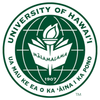Presented on Wednesday, February 8, 2023, by
Michael M. Bell
Colorado State University
Abstract:
Weather radar has advanced scientific progress in many areas of atmospheric science, such as
tropical and mid-latitude weather prediction, regional climate and climate change, cloud
microphysics, dynamics of convective storms, and extreme weather impacts. Many radar datasets
are publicly available, as well as free, open-source community software tools such as the Lidar
Radar Open Software Environment (LROSE) developed jointly by Colorado State University
(CSU) and the National Center for Atmospheric Research (NCAR). There are also several radars
that are requestable through the National Science Foundation, including the CSU Sea-Going
Polarimetric (SEA-POL) radar which has recently been designated as a community facility
available for deployment requests. The stabilization and rugged design of SEA-POL allow for
research-grade accuracy of polarimetric weather radar measurements on a ship or on land that
can probe the structure of clouds and precipitation. SEA-POL and other radars, including
airborne and ground-based platforms, can also contribute to interdisciplinary science in
oceanography, hydrology, and water resources. In this presentation we will provide an overview
of some recent advancements in tropical weather using radar, including new insights into tropical
cyclone rapid intensification, cloud microphysics, and oceanic precipitation. We will also present
an overview of SEA-POL and some highlights from past deployments, along with information
for potential future users of this community facility.

